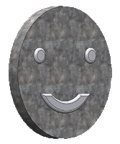- Posts: 1
- Thank you received: 0
 Question
aluminum cut
Question
aluminum cut
- montes_ricard
-
 Topic Author
Topic Author
- Offline
- Forum Nutzer
-

Please Log in or Create an account to join the conversation.
- ubo
-

- Offline
- Forum Nutzer
-

Gruß,
Uwe
WinPC-Nc V4, EstlCAM V11 / V12
www.ubo-cnc.de
Please Log in or Create an account to join the conversation.
- Rory
-

- Offline
- Forum Nutzer
-

- Posts: 383
- Thank you received: 147
Please Log in or Create an account to join the conversation.
- Doug
-

- Offline
- Forum Nutzer
-

I have successfully milled 1.2 mm thick aluminium sheet using small diameter two flute end mills with no air or liquid cooling. The grade of aluminium is important. Too soft/pure (e.g. 1050A) and it melts the aluminium.
I even managed to mill a 20 mm thick aluminium block with no cooling (once) using the Stepcraft.
Take a look at my posts. I have several YouTube videos illustrating this process and I mention appropriate feeds and speeds which work repeatably.
Regards.
Doug
Stepcraft 2/840, StoneyCNC industrial HF spindle, 4th axis, TurboCAD 2016 Professional 64 bit, MeshCAM, GWizard feeds & speeds calculator, UCCNC
Hobby use: guitar building (luthiery), dsgb.net
Please Log in or Create an account to join the conversation.
- Theg
-

- Offline
- Forum Nutzer
-

- Posts: 4
- Thank you received: 0
Please Log in or Create an account to join the conversation.
- Hurcokid
-

- Offline
- Forum Nutzer
-

- Posts: 7
- Thank you received: 1
Where possible Do Not plunge in, if need to then 10mm/min max
I used wd40, or very light oil prior to cutting to wet the cutter to prevent build up of ally on the cutting edge of the cutter.
To be honest anything wet will work prior to cutting.
KEEP fingers away at all times.
Apply with a long brush or spray.
Please Log in or Create an account to join the conversation.
- Cpt Wingnut
-

- Offline
- Forum Nutzer
-

- Posts: 33
- Thank you received: 8
Try using a single or two fluted mill, I found this Stepcraft blog helpful too.
www.stepcraft.us/blog/our-blog-1/post/optimal-settings-for-cutting-aluminum-on-a-stepcraft-cnc-system-3
I also ran a load of tests to see what works and what doesn’t. here are some results.
www.stepcraft-systems.com/en/forum/milling/5309-milling-aluminium
(the deeper cuts, 0.5, 0.7, 1mm were just to experiment).
Please Log in or Create an account to join the conversation.
- Doug
-

- Offline
- Forum Nutzer
-

[/i]Theg wrote: Doug, what sort of cut did you do with the 20mm aluminium? I have spent the last 9 days!!!! trying to machine some relatively simple parts for a friend. my feeds are slow as, solid carbide 4 flute, cutting oil, cooling spray, 0.2mm pass, 4mm bit, HF spindle, etc etc. I have loads of experience, however the v2 840 has rattled its guide bearing loose 5 times now, worn the Y axis lead nuts, loosened the collet...…. no missed steps, no stress on any of the steppers, 37degs C in 24deg weather...….. I`m of the thought this machine is not fit for purpose.... id love for someone to prove me wrong without loads of mods? When the X access or Y axis tensions bolts loosen they cutters grabs the material and because there is zero rigidity it gets exacerbated violently with zero high draw protection. this isn't helped of course by the performance upgrade kit that has SS pins in the ally coupler that simply bend the ally and fall out...….
Hi Theg.
The machine is not fit for the purpose of milling aluminium really, but some of us have managed to get it to work under optimal circumstances of mechanical tuning and very light cutting duty, low speeds and literally shaving the surface. It is a light duty hobby router, not any kind of milling machine. It's not rigid enough, even with the aluminium T-slot tables to sustain heavy milling of soft metals like aluminium. That said, the smaller footprint machines must necessarily be more rigid than our larger ones. In general, all users of the smaller footprint machines have experienced fewer problems getting them to run properly than those running the 2/840 machines.
You must use single or two flute cutters as has been stated; four flute cutters present too much resistance and lower spoil clearance. You also need to use small diameter cutters. 0.2 mm is still too large a depth IMO. I think I used a 4 mm diameter 2 flute cutter for the block, but I can't remember. I would recommend not trying a cutter larger than 3 mm diameter in fact.
I have experienced all the symptoms you describe except noticeable component wear and tear. I don't have details (video or cutting parameters) of the milling of the 20 mm thick block but it did work. I still have the block. I am not keen to repeat any aluminium milling endeavours to be honest. Here are the videos I do have on Youtube of cutting 1.2 mm thick plate:
Steer clear is my advice. If you bought your machine with the express intention of milling aluminium, I think that this was a mistake, sorry.
Doug
Stepcraft 2/840, StoneyCNC industrial HF spindle, 4th axis, TurboCAD 2016 Professional 64 bit, MeshCAM, GWizard feeds & speeds calculator, UCCNC
Hobby use: guitar building (luthiery), dsgb.net
Please Log in or Create an account to join the conversation.
- Doug
-

- Offline
- Forum Nutzer
-

I prepared a section of 6082 T6 aluminium bar to 84 x 16 x 10 mm using a hacksaw and abrasive paper and mounted this onto a levelled, square section of aluminium plate on my CNC machine bed using cyanoacrylate superglue. I then use three single fluted solid carbide cutters to mill the roller bridge: a 3 mm one for the thicknessing operations then a 2 mm cutter for the outline and roundover toolpath and cutting out the individual blocks and finally a 0.8 mm cutter for milling the roller axle channels (see note below).
I designed the general appearance such as the edge roundovers to resemble the Guyton Red Special bridge with the exception that the channels cut to accommodate the 1/32″ (0.8 mm) diameter axles of the roller saddles are drilled to 0.8 mm deep on those pieces whereas I only milled them to half-depth (0.4 mm) for this video. Embedding them to the full diameter of the axle goes some way to ensuring that the won’t pop out during string fitting.
Bridge Saddle Dimensions
Bridge saddles length: 5/8″
Bridge saddles width: Top & bottom E: 1/2″ (12.7 mm), middle four: 13/32″ (10.3 mm)
Bridge saddles height: Low and high E: 35/128″ (6.95 mm) A & B: 39/128″ (7.74 mm) D & G: 43/128″ (8.53 mm)
Roller rebate width: 25/128″ (4.96 mm)
Roller rebate depth: 3/32″ (2.4 mm) on all saddles
Screw holes to accept a cheese head machine screw (M3 or 6BA), 2 mm head depth
Bridge Rollers Specification
Overall width including axles: 23/64″ (9.13 mm)
Cylinder width: 3/16″, 4.76 mm
Cylinder diameter: 11 SWG (2.946 mm). All cylinders have a 0.042″ (1.07 mm) toroidal channel
Axle length: 23/64″ (9.13 mm)
Axle diameter: 1/32″ (0.8 mm)
The following information is essential when attemping aluminium milling on a CNC router (as opposed to a liquid cooled CNC milling machine):
- High Brinell hardness alloys machine better, e.g. 6061-T6. Temper (T-number) is important
- Use a very low XY feed rate, e.g. 500 mm/min
- Use a small diameter, SINGLE FLUTE cutter
- Shave the metal (e.g. 0.05 mm depth per pass
- Decrement the cutter height off the stock because end mill flutes are not designed for drilling
- Use a spindle speed less than 10,000 rpm (e.g. 7,500 rpm)
- Use a lubricant, e.g. WD-40 Specialist dry PTFE
Stepcraft 2/840, StoneyCNC industrial HF spindle, 4th axis, TurboCAD 2016 Professional 64 bit, MeshCAM, GWizard feeds & speeds calculator, UCCNC
Hobby use: guitar building (luthiery), dsgb.net
Please Log in or Create an account to join the conversation.

